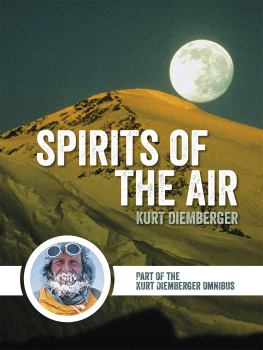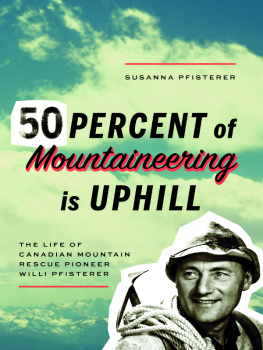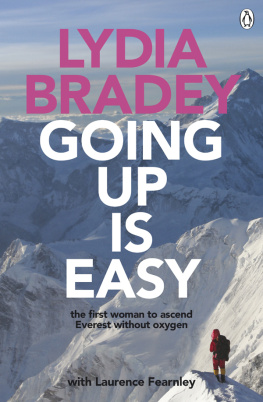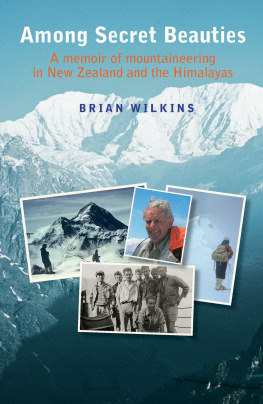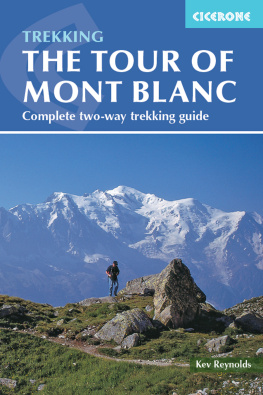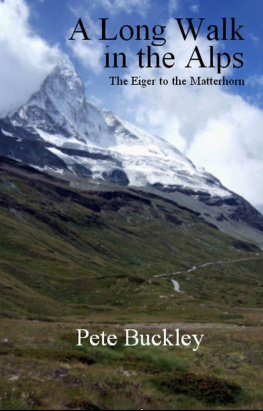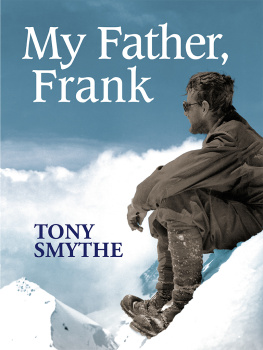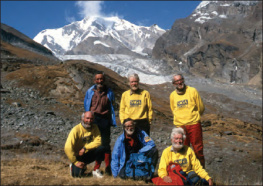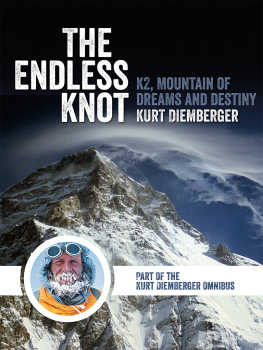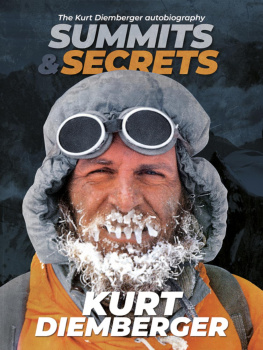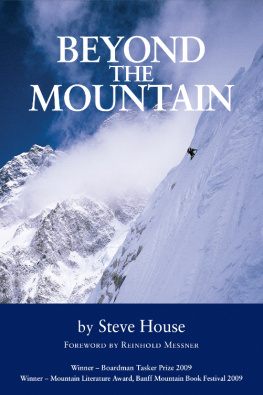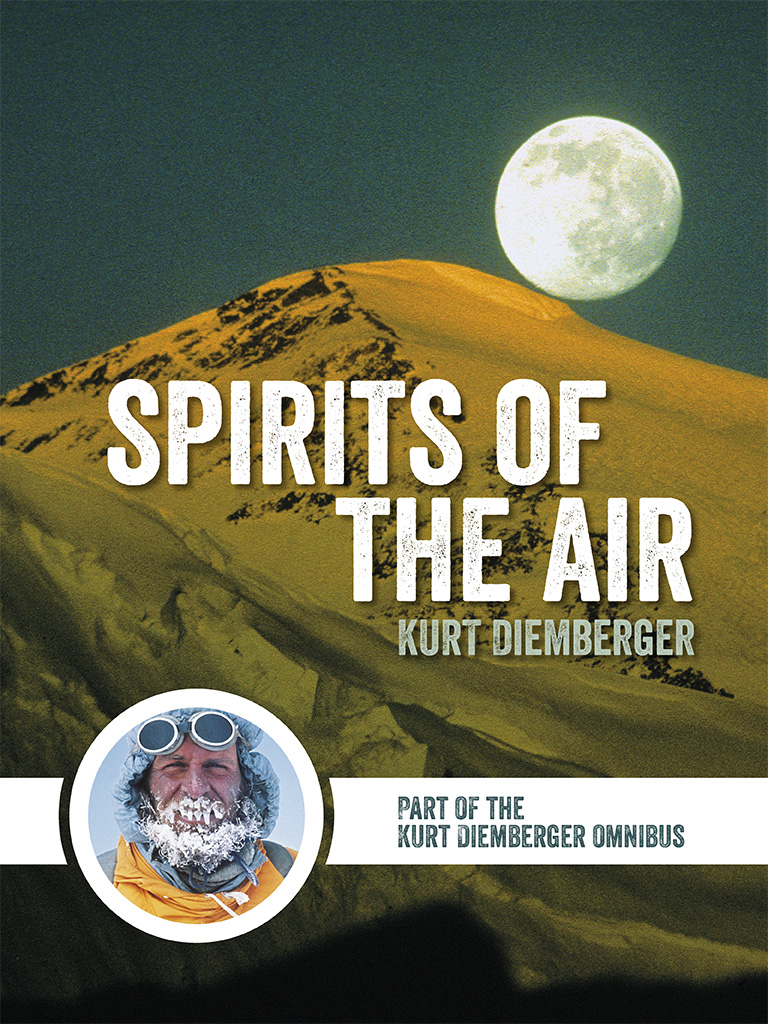Unless otherwise specified the illustrations are from the Kurt Diemberger archive: for collaboration in some cases I want to thank my companions named in the book. Professor Karl Weikens historical pictures of the Alfred Wegener expedition were a great help and a notable contribution. Other photographs came from Robert Kreuzinger, Sadamasa Takahashi, Doug Scott and Hermann Warth.
Most of my photographs were taken with a Leica R3 or SL2.
Credits for the sketch maps are given, but I want to thank my son Igor and my daughter Karen for helping in their adaptation for Spirits of the Air.
A special thanks goes to my father for historical work in the Greenland chapter and to Professor Karl Weiken for checking my text and lending expedition reports. I am also very grateful to Axel Thorer for the permission to print his humorous story describing the atmosphere in a hotel bar in Kathmandu which appeared in May 1980 in the German edition of Penthouse.
Last but not least, I would like to thank Audrey Salkeld for her translation and Maggie Body, my editor.
Kurt Diemberger
Austrian mountaineer Kurt Diemberger one of an extremely select club he is the only climber alive to have made the first ascent of two of the worlds 8,000-metre peaks: Broad Peak in 1957 and Dhaulagiri in 1960. An accomplished writer and filmmaker, he became one of the top high-altitude filmmakers in the world and his books have enjoyed popularity around the globe. He is now recognised as one of the finest chroniclers of the contemporary mountain scene, with his writing guaranteed to enlighten, move and entertain. In 2013, Diemberger was awarded the fifth Piolets dOr lifetime achievement award.
Born in 1932, Diemberger began mountaineering in the Alps, quickly notching up an impressive list of ascents. By 1958 he had climbed the three great north faces of the Alps the Eiger, Matterhorn, and Grandes Jorasses. He soon turned his attention to the Greater Ranges, where he made several notable and first ascents, usually without oxygen.
Both of his 8,000-metre first ascents were made without additional oxygen and Broad Peak, which he climbed with Hermann Buhl, Marcus Schmuck and Fritz Wintersteller, was the first eight-thousander to be ascended in alpine-style, renouncing help from high-altitude porters and artificial oxygen and without backup from base camp) long before this technique became widely used on the Himalayan giants. In all, Kurt has climbed six of the eight-thousanders, and Broad Peak twice (the second time in 1984 with Julie Tullis, twenty-seven years after his first ascent).
Diembergers mountain film career began in 1958, when he filmed the greatest ridge-traverse of the Alps the Peuterey Integral on Mont Blanc, including the Aiguille Noire and Aiguille Blanche from a rope of just two (his patient partner during the five-day climb was Frans Lindner).
He then filmed the first ascent of Dhaulagiri in 1960, made films in Greenland, the Hindu Kush and in Africa, and in 1974 took his sixteen-millimetre camera up the traverse of the future on Everest when he reached the top of Shartse (7,500 metres), having made the first ascent with his friend Hermann Warth leaving the continuation of the enormous ridge traverse via Lhotse and Everest for others still to come.
Later, in autumn 1978, Diemberger succeeded in making a sync-sound film on the top of Everest itself, recording his French companions and making a complete 360-degree panorama with his still camera. It was a world-first and, for Kurt, a keen photographer from his earliest visits to the Alps, a crowning moment.
Diemberger made several award-winning documentaries with Julie Tullis, his high-altitude filming companion and other ego in later years. These included three films on K2, where the pair also entered the field of documentaries of local people in the Himalaya with Tashigang a Tibetan village between the world of humans and the world of spirits and mountain gods.
Both had great ideas for filming in this area, and they would have continued their creative union but Julie, after reaching the summit of their dream mountain K2, died in a long-lasting blizzard during the notorious black summer of 1986, which claimed the lives of thirteen climbers on K2.
In the Shaksgam wilderness, behind K2, a drum full of gear has been hidden since 1999 and Kurt, after seven previous visits, hopes to return for future exploration. When he was awarded the Piolet dOr for lifetime achievement in 2013, it was not just for having climbed so many north faces, or having overcome the Giant Meringue of the Koenigsspitze (then far ahead of similar stunts), but for what he had created during his mountaineering careers for all others with his camera, images and writing.
I Can Never Give Up the Mountains
We are climbing up Nanga Parbat, my daughter Hildegard and I, entering the Great Couloir of the Diamir face. Behind us rear the wild summits of the Mazeno ridge, a fiercely serrated wing of blue ice and steep rock jutting from high on the main body of the mighty mountain. Way below glints the green of the Diamir valley.
Here, all is steepness and shadow. We keep plunging our axes into the snow, and of course, we are wearing our crampons. Hildegard blonde, twenty-five years old is a confident climber, even if, as an ethnologist, her deeper interest lies with the people of the mountains. She has come with me this time to the peak that was Hermann Buhls dream and, who knows, the two of us may reach as far as 6,000 metres. Perhaps, in a few days, I might even go to 7,000 metres, but I am not pinning my hopes any higher. I have no idea how my K2 frostbite will bear up at altitude. It was only just before Christmas that I had the amputations to my right hand and with my damaged toes I cannot entertain any hopes of the summit. Yet neither can I accept the prospect of staying down. There is no way I can give up climbing mountains.
Below us, on the slope, Benot has just come into view, the young French speed-climber attached to our expedition tack, tack, tack, tack his movements are like clockwork, as is the rhythmic throb of his front-points and his axe in the steep ice of the couloir. He wants to climb the 8,125 metres of Nanga Parbat in a single day. But not today today he is only practising.

